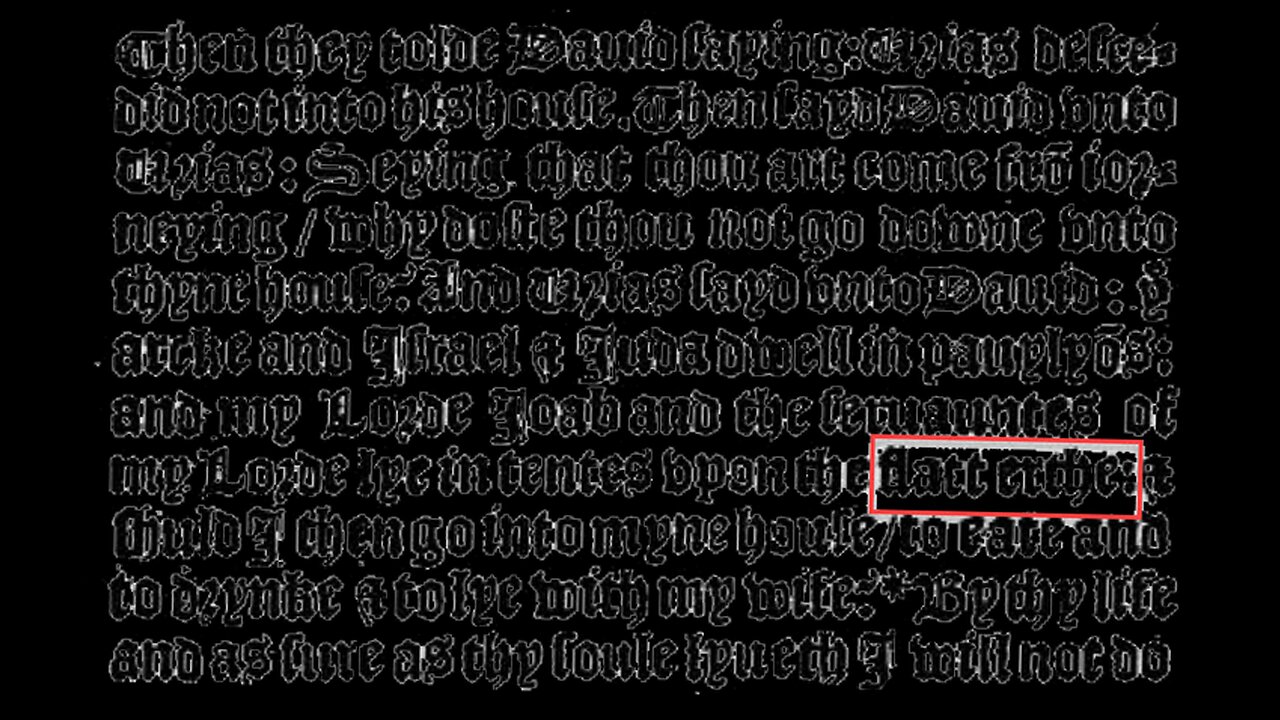Premium Only Content

What does the first English Translation of the Bible in 1537 say about the shape of the Earth?
https://www.bl.uk/collection-items/matthews-bible
The Matthew Bible, also known as Matthew's Version, was first published in 1537 by John Rogers, under the pseudonym "Thomas Matthew". It combined the New Testament of William Tyndale, and as much of the Old Testament as he had been able to translate before being captured and put to death. Myles Coverdale translated chiefly from German and Latin sources and completed the Old Testament and Biblical apocrypha, except for the Prayer of Manasseh, which was Rogers', into the Coverdale Bible. It is thus a vital link in the main sequence of English Bible translations.
The Matthew Bible was the combined work of three individuals, working from numerous sources in at least five different languages.
The entire New Testament (first published in 1526 and later revised in 1534), the Pentateuch, Jonah and in David Daniell's view,[1] the Book of Joshua, Judges, Ruth, First and Second Samuel, First and Second Kings, and First and Second Chronicles, were the work of William Tyndale. Tyndale worked directly from the Hebrew and Greek, occasionally consulting the Vulgate and Erasmus’s Latin version, and he used Luther's Bible for the prefaces, marginal notes and the biblical text.[2][3][4][5] The use of the pseudonym "Thomas Matthew" resulted possibly from the need to conceal from Henry VIII the participation of Tyndale in the translation. A theory exists from Dr. Harding that indicates the name Thomas Matthew, which in Greek means "A twin to the original gift from God", may have been chosen to indicate that the largest contributing author was indeed William Tyndale and that his writings were preserved by Coverdale and Rogers.[6]
The remaining books of the Old Testament and the Apocrypha were the work of John Rogers and Myles Coverdale. Coverdale originally translated primarily from German and Latin sources and in the Matthew Bible they used the original language texts to translate.[7] Historians often tend to treat Coverdale and Tyndale like competitors in a race to complete the monumental and arduous task of translating the biblical text. One is often credited to the exclusion of the other. In reality they knew each other and occasionally worked together. Contemporary historian John Foxe states that they were in Hamburg translating the Pentateuch together as early as 1529.[8]
The Prayer of Manasseh was the work of John Rogers. Rogers translated from a French Bible printed two years earlier (in 1535). Rogers compiled the completed work and added the preface, some marginal notes, a calendar and an almanac.
Of the three translators, two met with martyrdom. Tyndale was strangled to death and his body burned on 6 October 1536 in Vilvoorde, Belgium.[9] John Rogers was "tested by fire" on 4 February 1555 at Smithfield, England; the first to meet this fate under Mary I of England. Myles Coverdale was employed by Cromwell to work on the Great Bible of 1539, the first officially authorized English translation of the Bible.
Time and extensive scholastic scrutiny have judged Tyndale the most gifted of the three translators. Dr. Westcott (in his History of the English Bible) states that "The history of our English Bible begins with the work of Tyndale and not with that of Wycliffe."[10] The quality of his translations has also stood the test of time, coming relatively intact even into modern versions of the Bible. A. S. Herbert, Bible cataloguer, says of the Matthew Bible, "this version, which welds together the best work of Tyndale and Coverdale, is generally considered to be the real primary version of our English Bible",[11] upon which later editions were based, including the Geneva Bible and King James Version.[11] Professor David Daniell recounts that, "New Testament scholars Jon Nielson[12] and Royal Skousen observed that previous estimates of Tyndale's contribution to the KJV 'have run from a high of up to 90% (Westcott) to a low of 18% (Butterworth)'. By a statistically accurate and appropriate method of sampling, based on eighteen portions of the Bible, they concluded that for the New Testament Tyndale's contribution is about 83% of the text, and in the Old Testament 76%.[13] Thus the Matthew Bible, though largely unrecognized, significantly shaped and influenced English Bible versions in the centuries that followed its first appearance.
-
 LIVE
LIVE
Red Pill News
2 hours agoBombshell Biden Docs Invalidate Autopen Pardons on Red Pill News Live
3,081 watching -
 13:53
13:53
TundraTactical
3 hours agoFudd Finder : 11 Questions Second Amendment Questions (And Roasts) to Ask Your Friends
4.22K -
 9:36
9:36
Silver Dragons
2 hours agoGold Price NEW ALL TIME HIGH - $5,000 GOLD NEXT?
3.81K -
 LIVE
LIVE
LFA TV
11 hours agoLFA TV ALL DAY STREAM - FRIDAY 9/5/25
1,050 watching -
 13:43
13:43
The Kevin Trudeau Show Limitless
2 days agoClassified File 3 | Kevin Trudeau EXPOSES Secret Society Brainwave Training
86.8K16 -
 1:11:24
1:11:24
vivafrei
5 hours agoDearborn Heights Police Have Been CONQUERED! Gender Madness on PASSPORTS! Canada Stuff & MORE!
84.2K38 -
 1:44:43
1:44:43
The Quartering
4 hours agoConservative Scam Busted, Black Fatigue Hits Airlines, Kimmel Meltdown
109K38 -
 39:07
39:07
Tudor Dixon
1 hour agoRFK Jr., Big Pharma, and the Hidden Risks of SSRIs in Pregnancy | The Tudor Dixon Podcast
4.51K -
![MAHA News [9.5] RFK Lights Up Congress, CDC House Cleaning, Fight Over Vax Mandates For School Children](https://1a-1791.com/video/fww1/b9/s8/1/i/h/m/f/ihmfz.0kob-small-MAHA-News-9.5.jpg) DVR
DVR
Badlands Media
13 hours agoMAHA News [9.5] RFK Lights Up Congress, CDC House Cleaning, Fight Over Vax Mandates For School Children
19.3K3 -
 59:29
59:29
The Tom Renz Show
2 hours agoWho Is Undermining Trump?
9.92K4